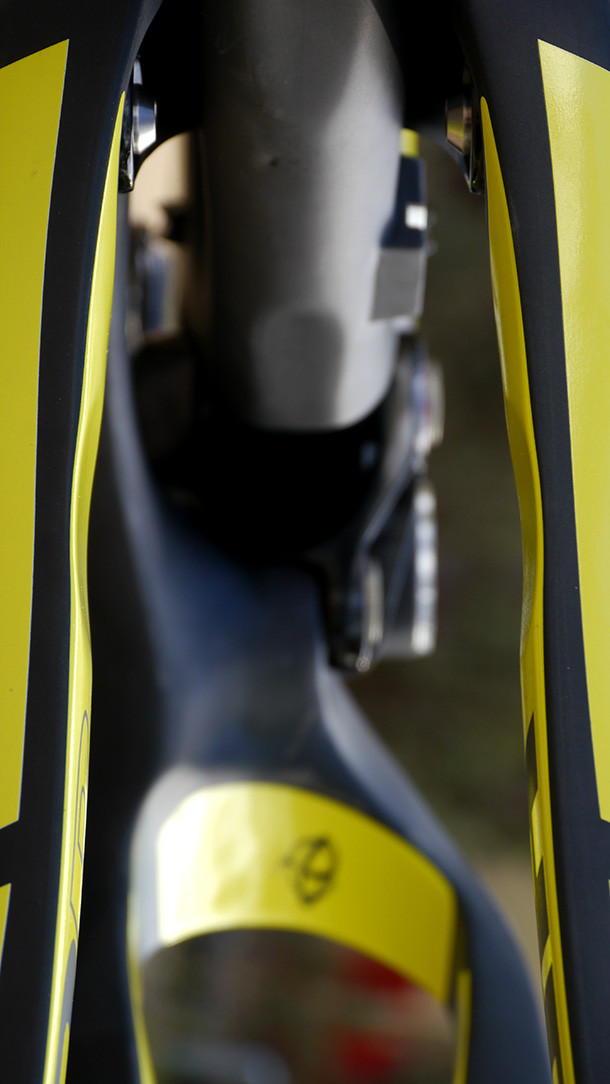From the original Mojo to the Mojo SL to the Mojo HD and most recently the Mojo SL-R, for both Ibis and mountain bike riders the Mojo has been the gift that keeps on giving. The Mojo’s combination of form and function is the stuff that bike companies dream of. Beautiful to look at and with trend shaping specifications and performance, impressively several years after its release the Mojo HD remains one of the most desired and revered carbon fiber All Mountain bikes – the genre defined in fact by the original Mojo.
In recent years however the winds of change have been blowing with gusto across the mountain bike scene. 29ers introduced mountain bikers to the benefits of larger wheels inadvertently adding momentum to the nascent 650b conversion scene, a familiar wheel size which to many was seen to offer the best of both worlds: the fun of a 26″, the efficiency of a 29er. In another stroke of Ibis prescience both the Mojo HD and SL-R allowed guys to experiment with 650b, though with limited frame clearance.
With the Ibis Ripley 29er released and receiving rave reviews what would Ibis roll out next? Bets were on for a 650b offering, but what would this mean for the HD?
Ibis Mojo HDR Review
Late in April I was stoked to receive an email from Scot Nicol AKA Chuck Ibis asking if I’d be interested in a project related to a Mojo HD update the company had been working on. Was I hallucinating? Was that a trick question? You betcha I’d be interested! A few emails zapped back and forth before Scot revealed the Ibis Mojo HDR:
It’s a significant update to the HD, called the HDR. It’s got the molding technology found in the SL-R but the strength of the HD. There are ISCG mounts. But here’s the real trick. We’ve built a new rear triangle with 650b clearance. You put on a new set of limbo chips and the shorter shock and it’s a 130mm travel 650b bike with low bb and a 67.5 head angle, and of course, clearance for 650b. We’re doing it in reverse vitamin P.
The much loved 160mm 26″ Mojo HD and 130mm 650b in one bike, plus a lighter frame and ISCG mounts. Sweet, and arguably a sharp move by Ibis that breathes new life into the HD while giving mountain bikers the ability to compare and explore 26inch vs 650b on the one bike.
We’re all familiar with the specs of the Mojo HD, now known as HDR 160mm. Here are the official Ibis specs for the 650b, dubbed by Ibis the HDR 130b:
130mm of rear wheel travel
dw-link Suspension
Shock specs: Fox Float CTD Adjust Factory Series with Kashima Coat, 7.875″ x 2.0″
650b (27.5″) Wheels
ISCG 05 compatible
Weight for the frame and shock, size medium, matte finish: 6 lbs
67.1 degree head angle with a 140mm fork
Optional polycarbonate down tube cable guard
Chain stay length: 17.125″
12 x 142mm Maxle rear axle
160mm post mount left dropout, carbon fiber
Tapered Head Tube and Steerer
Compatible with Chris King InSet 3 headsets
Up to 2.35″ rear tire depending on brand and height of cornering knobs
Dual row angular contact bearings in the front of the lower link that have less play than standard sealed bearings. Preload adjustment is not necessary. Large 28mm x 15mm x 7mm radial bearings in the rear for stiffness and long wear
The Bottom Bracket height is 13.6″
Front derailleur (if you use one) and adjustable seatpost housing (if you use one) run along the top tube
Direct mount front derailleur
I’ve loved my 26″ 160mm Mojo HD to bits ever since receiving it from Over the Edge in Melrose back in November 2010 but with the arrival of the HDR frame from the USA was itching to see how it compared to a 650b HD. Melrose South Australia was the perfect place to work on the HDR project – great trails, awesome scenery and welcoming folk – and as it happened Rich at Over the Edge had recently converted his Ibis SL-R to a 650b and graciously offered use of his 27.5″ wheels and forks. A perfect Mojo storm was forming!





The plan was to swap all of my components from the HD to the HDR. The only hiccup was the rear axle which on my original version of the HD was 135×12. Newer versions of the HD and HDR moved to the 142×12 ‘standard’. Thanks to Mike at The Bike Vault in Castlemaine for installing the Hope Pro II Conversion kit which included a new axle and caps.
With the hippie van loaded up I headed across Victoria for the 12 hour drive to Melrose South Australia stopping along the way at Worlds End Highway to take a few pics of the HDR.


As I’d only had a chance to briefly wheel the HDR around to check everything worked before leaving home, with the sun shining in Melrose the first order of business was to hit the trails ASAP.
First Impressions of the Mojo HDR 160mm 26″
Compared to my HD I immediately noticed the weight reduction and a different ‘more lively’ feel of the frame, which I put down to the HDR using the same molding technology as found in the SL-R . It’s hard to put into words but there’s no mistaking the 26″ HDR for a 26″ HD. You definitely feel it between your legs! 🙂 Over the Edge has no shortage of Mojo HD’s and after a test ride store owner Rich commented on exactly the same thing – the HDR feels ‘sportier’/more SL-R like vs the HD. The other thing that stood out is the vastly superior performance of the new Fox rear shock versus my old and admittedly neglected RP23.
Add in ISCG and the HDR in 26″ guise is basically an improved HD, a tidy update to a classic All Mountain bike.

But that’s just where the story of the Ibis Mojo HDR starts. Grab yourself a coffee, there’s plenty more HDR coverage on DigitalHippie!